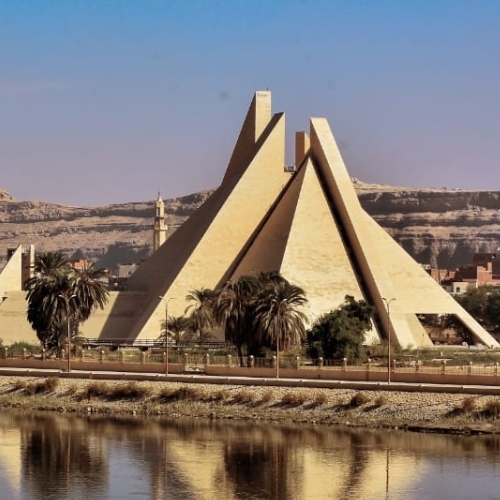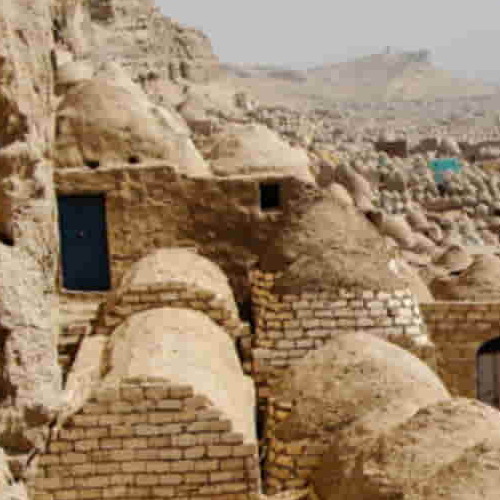Beni Hassan
Beni Hassan in Al Minya: A Tapestry of Ancient Majesty
In the heart of Egypt, south of el-Minya, lies Beni Hassan, a quaint village shadowed by the high limestone cliffs of the Nile’s east bank. This historic site, dating from the 11th and 12th Dynasties, with a few remnants from the 6th Dynasty, is a treasure trove of rock-cut tombs. These tombs, once the final resting places of provincial rulers, provide a window into the independent power wielded along the Nile Valley in ancient times.
A Stairway to History
Access to these tombs is an adventure in itself, involving a steep climb up stone steps, rewarding visitors with breathtaking views of the Nile’s vast river valley. Among the 39 tombs etched into the cliffside, only a select few are adorned with decorations, and of these, four are currently open for public admiration, along with an undecorated tomb (BH18). These sites offer a unique glimpse into the early Middle Kingdom’s distinct mortuary art, rich with colorful depictions of daily life, recreational pursuits, and military endeavors.
An Unconventional Resting Place
The choice of the east bank for this necropolis, contrary to the usual west bank associated with Osiris, adds a layer of intrigue to Beni Hassan. The site’s history of exploration and excavation is extensive, with notable work by Percy Newberry, John Garstang, Nina de Garis Davis, and the Egyptian Antiquities Organization, which in the 1980s restored the tomb wall paintings to their original vibrancy.
Tomb of Baqet III (BH15)
Baqet III’s tomb, dating from the later years of Dynasty XI, offers a vibrant depiction of his life as a provincial governor. Scenes of hunting, industry, and leisure activities, including the unusual depiction of wrestling, adorn the walls, providing a detailed account of Baqet’s life and times.
Tomb of Khety (BH17)
Continuing the familial legacy, the tomb of Khety, son of Baqet III, mirrors the architectural style of his father’s resting place. Its walls are a canvas of daily activities, with detailed scenes of fowling, harvesting, and local industries, all under the watchful eyes of Khety and his wife.
Tomb of Amenemhet (BH2)
Amenemhet’s tomb, from the 12th Dynasty, marks a shift towards more elaborate tomb architecture, complete with a courtyard and a portico. The vibrant wall paintings continue the thematic tradition of agriculture, industry, and military scenes, with a large offering list prominently displayed.
Tomb of Khnumhotep II (BH3)
Khnumhotep II’s tomb stands out for its vivid and dynamic scenes. Notable are the depictions of an Asiatic caravan and intimate family moments in the marshes, making it one of the most engaging and distinctive tombs at Beni Hasan. Khnumhotep’s autobiographical text and the remains of statues add personal touches to this historic site.
A Journey Through Time
Visiting Beni Hassan is more than an exploration of tombs; it’s a journey through the annals of Egyptian history, offering a rare insight into the lives, beliefs, and artistry of ancient provincial rulers. This site, with its panoramic Nile views and richly detailed tombs, stands as a testament to Egypt’s enduring legacy and the complexities of its ancient civilization.
Created On April 20, 2020
Updated On January 24, 2024



